While native perennial flowers are the foundation of my pollinator garden, annuals add pizzazz and lots more pollen and nectar sources to draw more butterflies, bees, and other pollinators to your garden.
These are the top-performing annuals in my zone 5 pollinator garden in Upstate New York.
1 – Cosmos
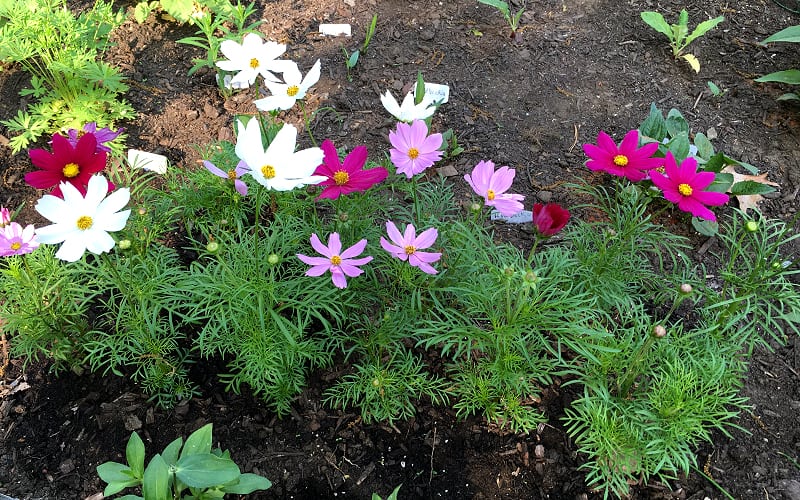
Cosmos rank #1 in my garden for attracting a wide variety of butterflies and bees. Plus I love the feathery foliage. Cosmos come in shades of pink, as well as white and orange.
Light: Full sun.
Get weekly moon wisdom delivered to your inbox every moon phase!
Height: Up to 24″.
Bloom Time: Spring/Summer/Fall.
Best For: Butterflies, moths, bees, syrphid flies, beetles.
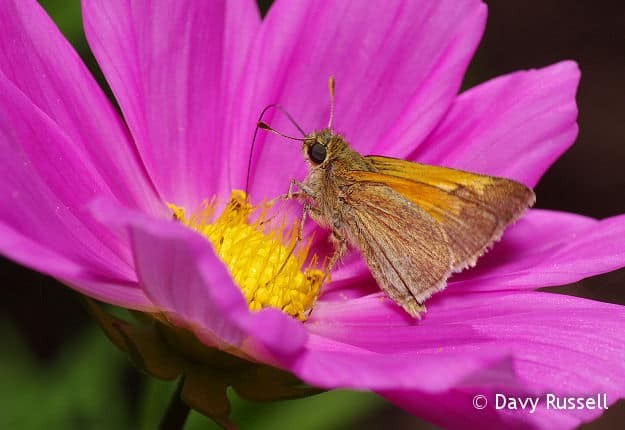
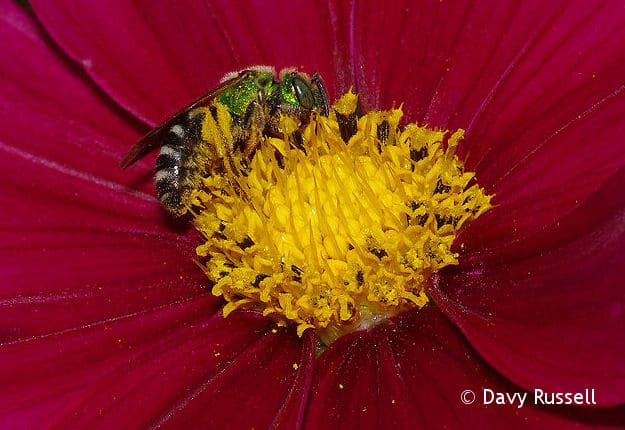
2 – Zinnia
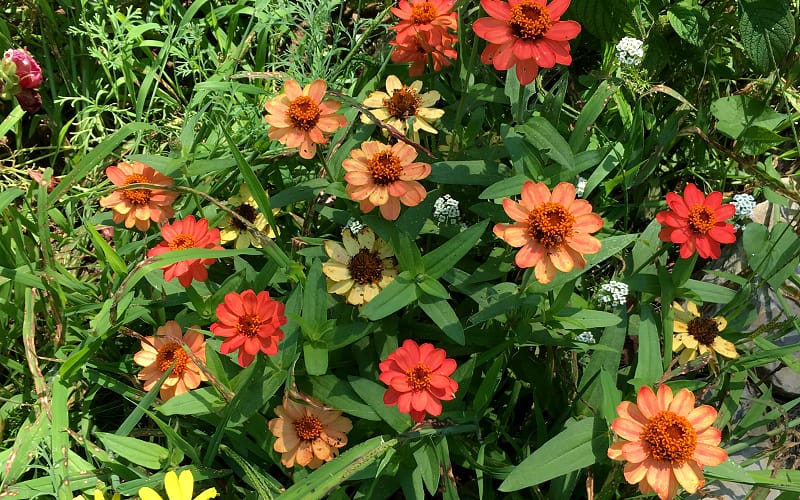
I LOVE zinnias because they send up a profusion of blooms all season long until frost ends the show.
There are a lot of Zinnia varieties, but the ones that performed the best in my garden so far have been the Profusion series and State Fair.
Profusion zinnias send up, well, a profusion of blossoms, making easy (and highly visible) masses of color that last all season. Mine never exceeded 12 inches in height and bushed out, so they are great for front of the garden.
State Fair gets tall – about two feet, and are perfect for middle of the garden.
Avoid double-flowered zinnias as they are not useful to pollinators (limited, if any, nectar or pollen.)
Light: Full sun.
Height: Up to 24″.
Bloom Time: Spring/Summer/Fall.
Best For: Butterflies, moths, bees, syrphid flies, beetles.
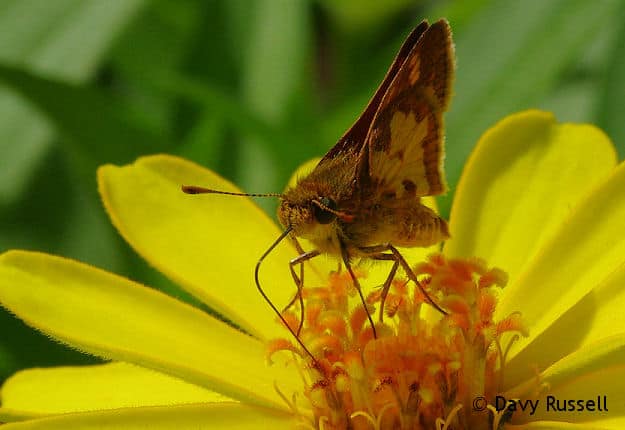
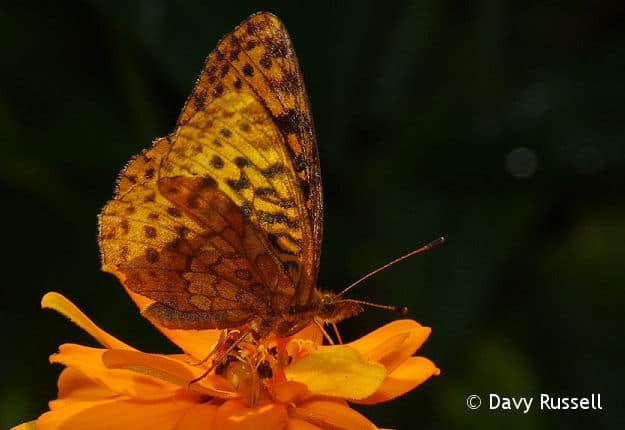
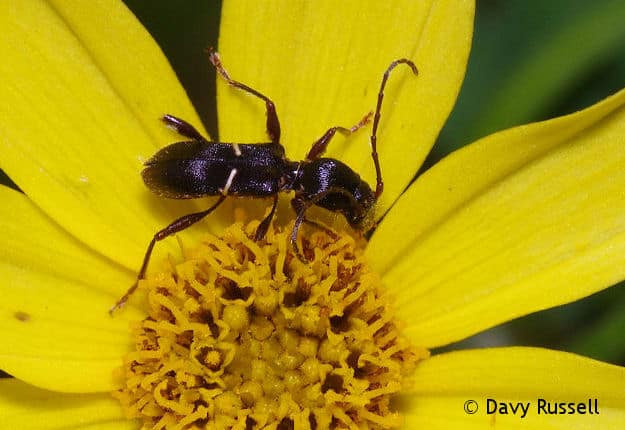
3 – Alyssum
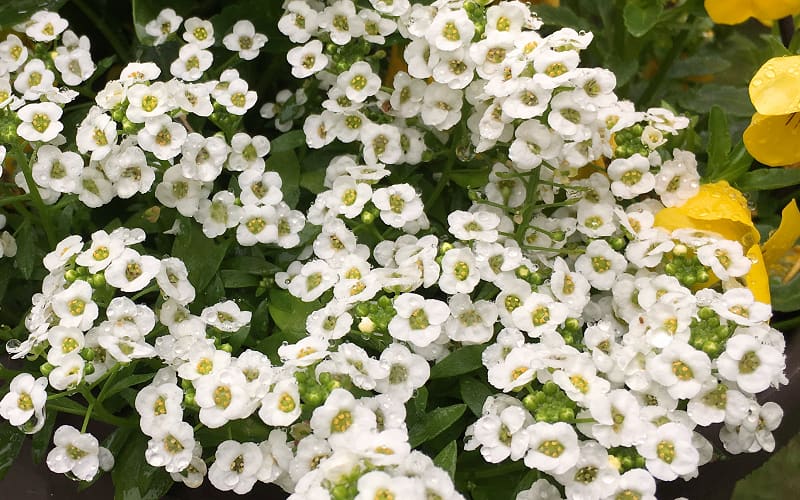
These low-growing masses of honey-scented white blossoms are a pollinator magnet! They are an excellent border plant in a pollinator garden.
Also comes in purple!
Light: Full sun to part shade.
Height: Up to 10″.
Bloom Time: Summer.
Best For: Butterflies, moths, bees, syrphid flies, beetles.
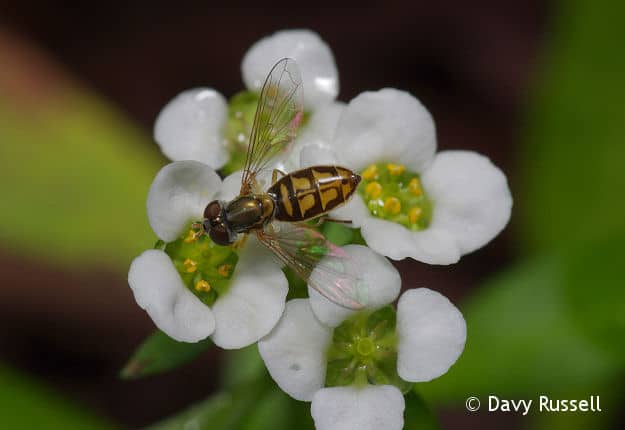
4 – Sunflowers
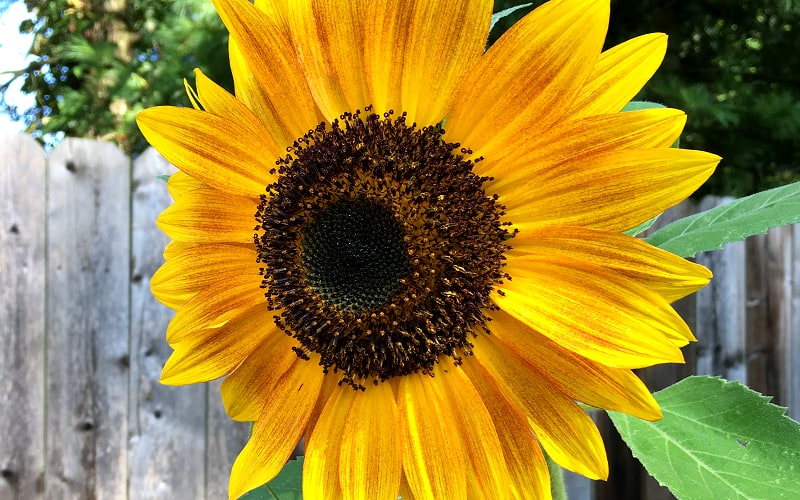
It doesn’t get better than sunflowers when it comes to attracting pollinators and other wildlife.
With tall plants and giant blossoms, sunflowers are highly visible and irresistible to butterflies, bees, and all sorts of pollinators.
As an added bonus, the seed heads attract chickadees, gold finches, titmice, nuthatches, and woodpeckers after the blossoms have been spent.
Light: Full sun.
Height: Up to 6+’.
Bloom Time: Late summer.
Best For: Butterflies, moths, bees, syrphid flies, beetles.
5 – Marigolds
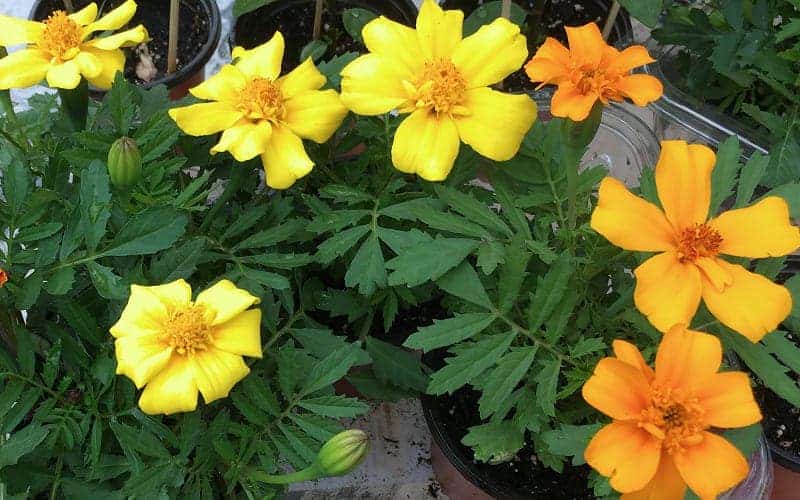
Marigolds are one of my favorite annuals for pollinators. However, you have to be sure to get single-flowered ones as butterflies and bees can’t use the double flowered (pom-pom) varieties.
I always plant a variety of yellow, orange, and red marigolds in my garden and butterflies and bees come to them all season long.
Light: Full sun to part shade.
Height: Up to 12″, but may spread out.
Bloom Time: Spring/Summer/Fall.
Best For: Butterflies, bees, bee flies.
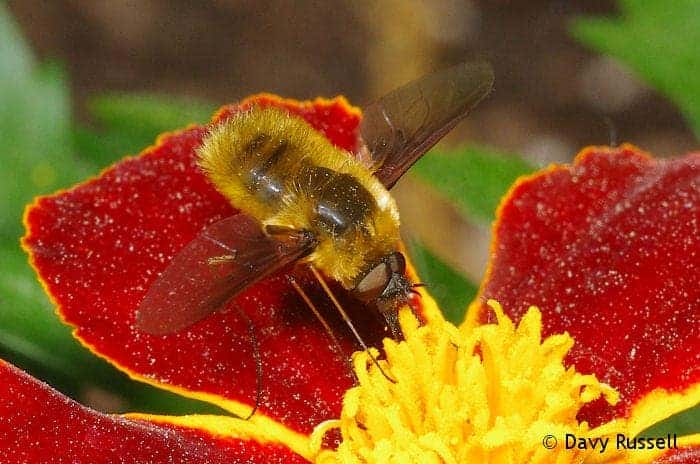
6 – Petunia
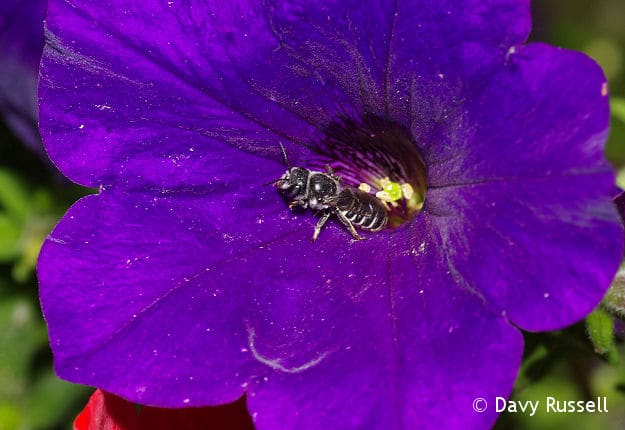
Petunias look great in hanging baskets as they send out cascades of trumpet-shaped blossoms all season long (as long as you deadhead them regularly).
You can also put them in large clumps at the front of the garden, or in window boxes.
Light: Full sun to part shade.
Height: Up to 12″, but may spread out.
Bloom Time: Spring/Summer/Fall.
Best For: Butterflies, bees, bee flies. Hummingbirds may also visit.
7 – Lantana
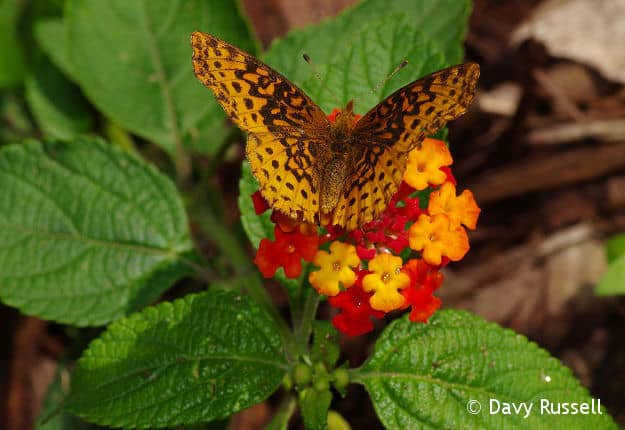
Lantana adds a splash of deep red, orange, and yellow in your garden. These drought-resistant, hot-weather plants are the perfect additions to your summer garden.
Light: Full sun.
Height: Up to 36″.
Bloom Time: Summer.
Best For: Butterflies, moths, bees, and syrphid flies.
8 – Annual Daises
Annual daisies draw in pollinators of all types thanks to their big, showy blossoms.
Gerber daisies are the most common ones found in garden stores.
I planted Gazanias (pictured below) for the first time in 2015 and loved them. They brought in bees and butterflies. The vividly colored blossoms close up at night and on cloudy days, only opening when they are bathed in full sun.
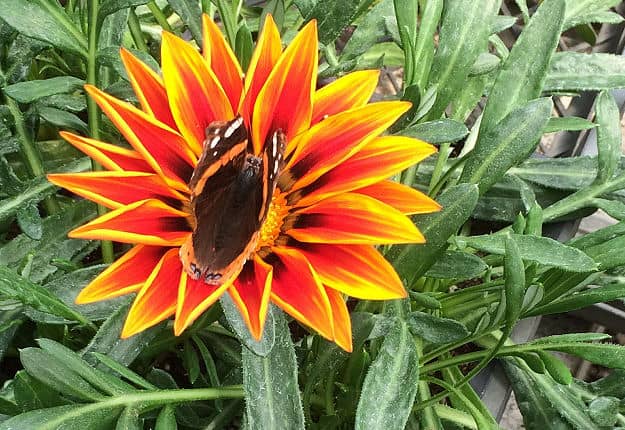
Another daisy I planted in 2015 was Butterfly Marguerite Daisy (Argyranthemum frutenscens), which is pictured below. It was constantly covered in interesting insects including moths and beetles.
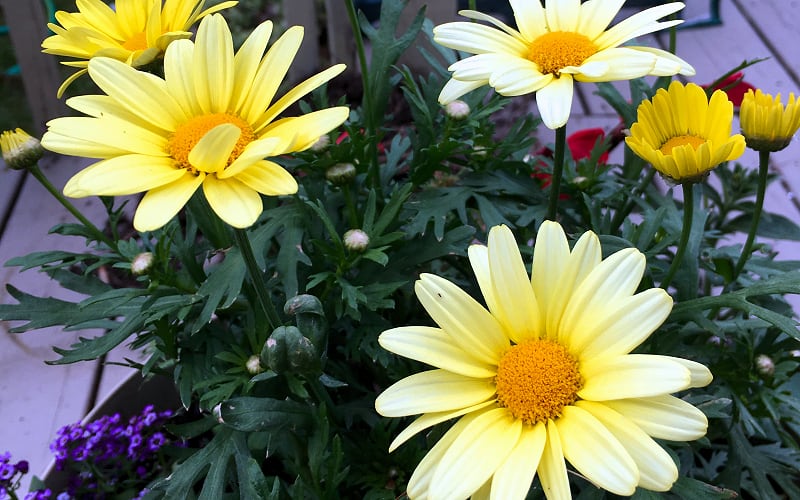
Osteospermum (also called African or Cape Daisies) are a big hit with bees and butterflies. They also tolerate cooler, early spring weather, taking a break during the hottest part of summer before giving an encore of blooms in the fall.
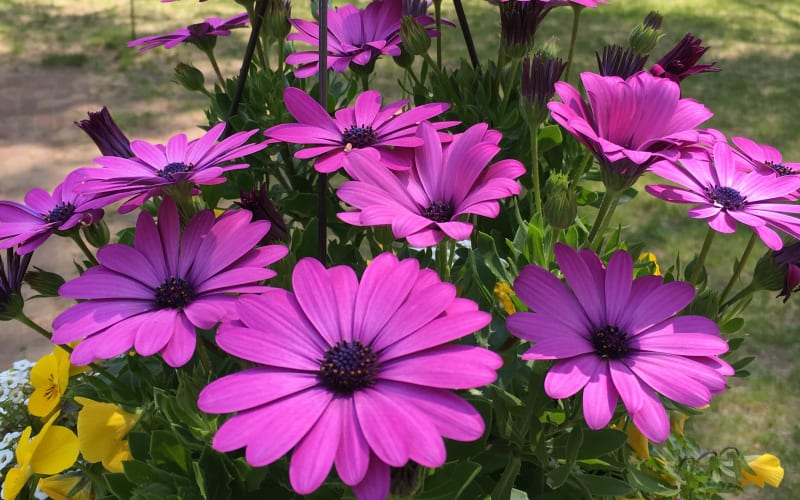
Light: Full sun (some varieties tolerate part-sun).
Height: Depends on variety and can range between 12″ and 36″.
Bloom Time: Summer/Fall.
Best For: Butterflies, moths, bees, beetles, and syrphid flies.
9 – Pansies
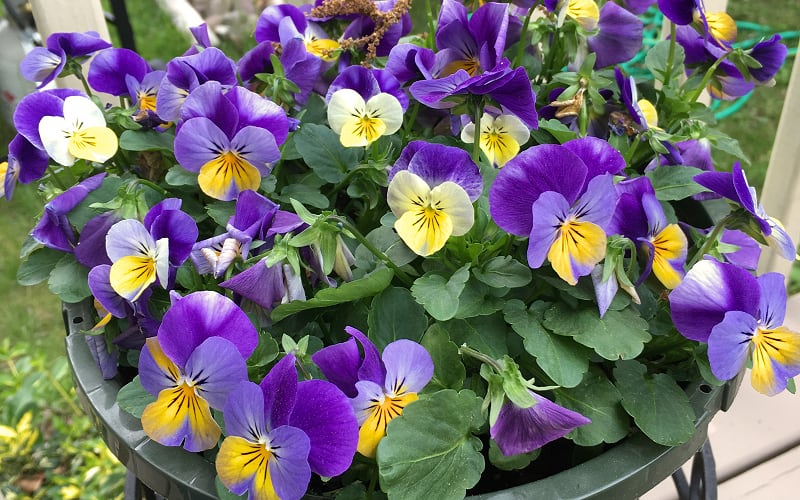
Pansies are great very early-season annuals that will provide a nectar source to bees and other pollinators emerging from hibernation in the spring.
Light: Full sun/part sun.
Height: About 8″.
Bloom Time: Spring/Early summer.
Best For: Butterflies, moths, bees.
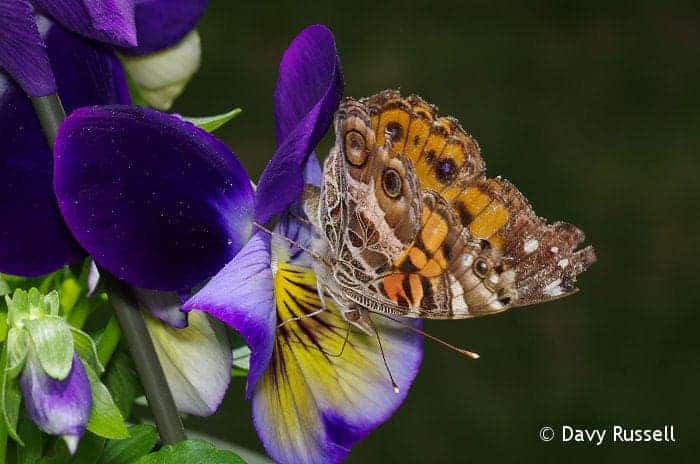
10 – Ageratum (Floss Flower)
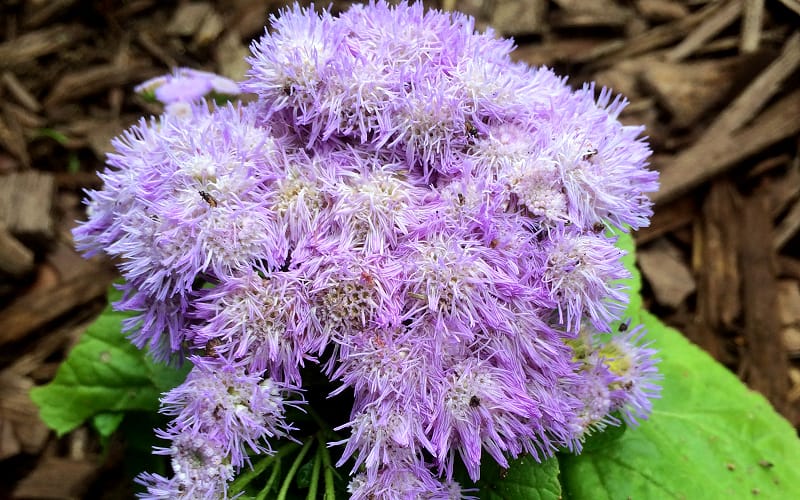
Ageratum, also known as “floss flower”, is another blue flower that is supposed to attract pollinators. I pretty much only saw tumbling flower beetles on mine.
Light: Full sun/part shade.
Height: 6″.
Bloom Time: Summer.
Best For: Butterflies, moths, beetles, bees.

11 – Lobelia erinus
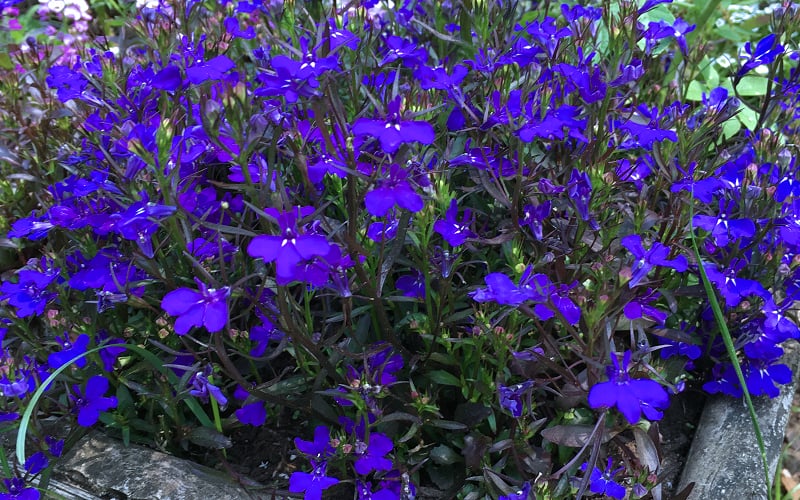
I’m a sucker for blue flowers, so when I saw lobelia erinus in the garden center, I couldn’t resist. Plus, the tag said they attracted butterflies.
While they looked great in my garden, I didn’t really see any activity to them all season except for a few brief visits by a bee fly.
Light: Full sun/part shade.
Height: 8″.
Bloom Time: Spring-Fall.
Best For: Butterflies, moths, bee flies, bees.
12 – Pentas
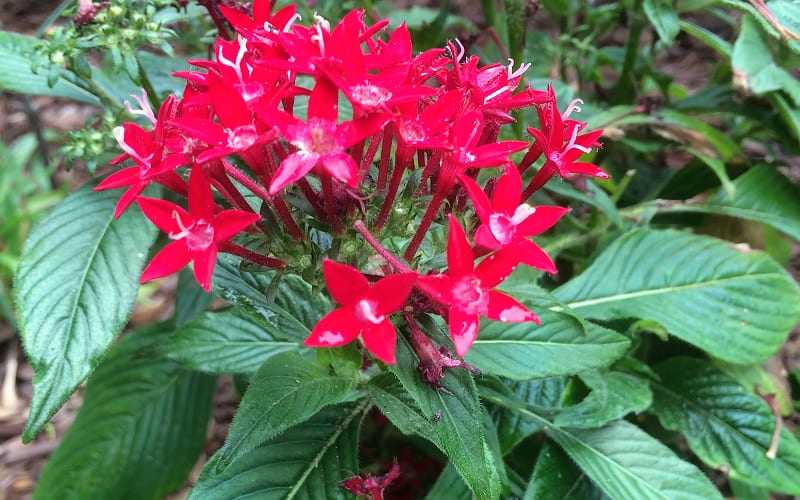
I love the look of Pentas (also known as “Star Flower” because of their star-shaped blossoms). I have also read that they are pollinator magnets, particularly attractive to butterflies.
Unfortunately, I didn’t see hardly any activity on the pink and red ones that I planted in my pollinator garden. Rain storms also knocked the blossoms off, and they never looked as good all season long as they did when I first planted them.
Nevertheless, I’ve heard great things about them and they are worth a try in your own garden.
Light: Full sun.
Height: Up to 15″.
Bloom Time: Summer.
Best For: Butterflies, moths, bees.
13 – Calendula
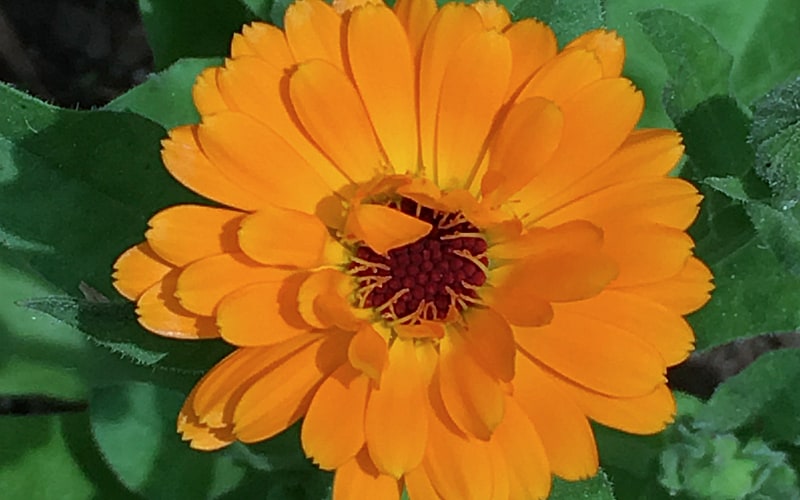
Also known as “pot marigold”, Calendula is notorious as a bee and butterfly magnate.
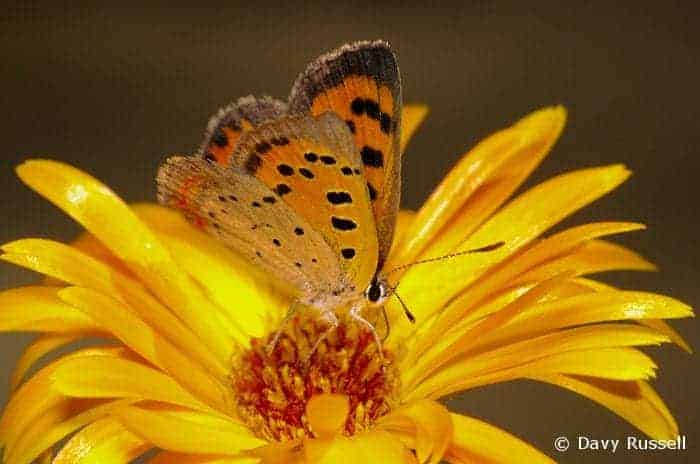
14 – Lavender
Not only does lavender smell heavenly, it’s a bee and butterfly magnet.
15 – Borage
I have never planted borage before, but I plan to for the 2016 season. Borage is a rich nectar source for bees, and it’s one of the favorite flowers for bumblebees. Borage is an edible herb, and can be added to salads.
Find out which perennials are best for attracting pollinators.
